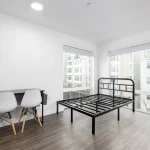Think you know how to get the most out of your air con? You might be surprised. From switching it off and on throughout the day to cranking it down to the lowest temperature on a hot day, there are plenty of air conditioning myths that could increase your running costs.
Many Australians rely on their air conditioner to stay comfortable. But much of what people believe about air conditioning comes from outdated advice. These ideas may seem harmless, but they can lead to poor energy efficiency and higher electricity bills.
The truth is, your system doesn’t need to work harder or use more electricity to keep your house cool. With a few smart changes and a better understanding of how your air conditioning unit works, you can improve comfort and reduce energy use.
This guide will help you sort fact from fiction, and make your cooling more cost-effective. Quality Air helps Aussie homes stay cool without blowing the budget.
Air Conditioning Myths That Could Be Costing You Big
There’s no shortage of air conditioning myths floating around. But following the wrong advice can increase energy consumption, reduce comfort, and raise your electricity bill.
Here are some of the biggest myths we hear, along with the truth behind them:
Turning your air con on and off saves energy
Frequent switching makes your unit start from scratch each time. This increases energy use and adds to your running costs. For better energy efficiency, set a comfortable temperature and allow your system to maintain it.
Setting the thermostat lower cools the house faster
Air conditioners cool at a steady pace. Dropping the temperature to 16°C does not cool the room faster. It just keeps the system running longer and wastes energy.
Ducted air conditioning is always more efficient
Larger homes often benefit from ducted systems, especially when zone control is added. For smaller spaces though, reverse cycle air conditioners or split systems tend to be a more energy-efficient choice.
Ceiling fans can replace your air conditioner
Fans help create air movement and make you feel cooler. However, they do not lower the temperature. Using ceiling fans with your air conditioning is the most cost-effective way to improve comfort and reduce energy use.
Bigger systems cool better
An oversized system can short cycle, leading to poor cooling and more electricity use. A properly sized, efficient model offers better cooling, lower running costs, and longer life.
Newer units aren’t much better
Modern air conditioning units use less electricity and offer better energy efficiency. Look for a zoned energy rating label and choose a model suited to your climate zone.
You don’t need servicing if it still works
Skipping regular maintenance leads to clogged filters and worn parts. This lowers cooling performance and increases energy use. Regular servicing helps your system run efficiently year-round.
Smart, Energy-Efficient Use Starts with the Right Habits
Even the most energy-efficient air conditioner will waste power if used poorly. Small issues like bad placement, blocked filters or missed regular maintenance reduce cooling and raise running costs.
Many homes still use older air conditioning units that consume more electricity than needed. These models often lack features that support energy savings. Choosing an efficient model is a smart step. But how you operate your system is just as important.
In Australia, heating and cooling account for around 40% of household energy use, according to the Australian Government’s energy.gov.au website. This highlights how your air conditioner habits affect energy bills and electricity use.
Use your air con with care. Set a comfortable temperature. Keep the thermostat away from direct sunlight or hot air. Schedule regular servicing to keep the unit efficient. These habits reduce energy consumption and improve performance over the long run.
The Best Position for Your Air Conditioner
The position of your air conditioner affects cooling efficiency, comfort, and running costs. Smart placement of your air conditioning unit supports better airflow, lowers energy consumption, and improves the overall performance of your system.
- Place the indoor unit for good air movement: The air conditioning unit should be in a central location. Avoid corners or tight spaces where cool air can’t circulate properly. This supports efficient use and consistent cooling.
- Keep it away from direct sunlight: Sunlight heats the area around the air conditioner, especially on a hot day. This forces the system to work harder, using more electricity and increasing running costs.
- Avoid blocking vents with furniture: Air movement is reduced when large items sit in front of vents. This affects cooling and reduces the overall energy efficiency of your air con.
- Install the thermostat in a neutral spot: Don’t place it near warm appliances, kitchens, or windows. A clear temperature reading helps your system operate more efficiently and maintain a comfortable temperature.
- Position the outside unit with care: The external or outside unit should be installed in a shaded area with good ventilation. This prevents overheating and supports energy-efficient operation.
Getting the best position for your air conditioning setup is one of the easiest ways to improve performance and lower electricity use. With proper placement, your system will cool more effectively and help save energy over time.
Get More from Ceiling Fans and Ducted Systems
Ceiling fans and ducted air conditioning can work together to improve cooling and reduce energy consumption. When used properly, they offer a cost-effective way to stay comfortable without using more electricity than needed.
- Use ceiling fans to improve air movement: Fans don’t cool the air, but they make it feel cooler by moving it around the room. This allows you to raise the temperature on your air con without losing comfort, saving energy in the process.
- Set fans to summer mode: In warmer months, ceiling fans should spin counterclockwise. This pushes cool air down and creates a breeze, improving cooling efficiency.
- Pair fans with your air conditioning: Using ceiling fans and your air conditioning together reduces the load on your system. Less strain means lower running costs and better energy efficiency.
- Use zoning in ducted systems: Ducted air conditioning can be efficient when zones are used correctly. Only cool the rooms you’re using. This supports energy savings and helps the system operate efficiently.
- Check fan speed settings: Adjust fan speed based on room size and ceiling height. This keeps airflow balanced and reduces unnecessary power use.
- Make use of timers and smart controls: Smart systems allow you to manage your air conditioning more efficiently. Set timers to cool rooms for a short period before use and avoid leaving the system on longer than needed.
Ceiling fans and ducted systems are both effective tools when used the right way. Together, they create a more energy-efficient home climate control setup that delivers cooling without the cost blowout.
Reduce Energy Bills with Smart Daily Habits
Daily habits play a big role in how much energy your air con uses. Small changes can lead to lower energy bills and better cooling performance.
- Clean your filters regularly: Blocked filters reduce airflow and increase energy use. Clean them every few weeks to keep your air conditioning unit running efficiently.
- Seal doors and windows properly: Gaps let hot air inside and cool air escape. This forces your air con to work harder and raises electricity use.
- Use curtains or blinds during the day: Keeping sunlight out reduces heat gain and helps maintain a comfortable temperature. This supports energy savings and improves cooling efficiency.
- Set a moderate temperature: Aim for around 24–25°C for most rooms. Setting it lower doesn’t cool faster but does increase energy consumption.
- Turn off unused zones in ducted systems: Cooling empty rooms wastes power. Zoning is key for efficient use in ducted air conditioning setups.
- Use external shading and insulation: Install external shading or plant deciduous trees around windows. This helps block out heat and reduces the load on your system.
- Track your electricity bill: Keep an eye on changes. Noticing higher costs can help you adjust how and when you run your air con.
- Operate for a short period before peak use: Start your system early, especially on a hot day. This helps cool the space gradually and avoids spikes in energy use.
Simple actions like these add up. They help reduce running costs, improve energy efficiency, and keep your home cool without using more electricity than needed.
Stay Cool Without the Cost
Many people follow air conditioning advice that seems right but leads to higher energy use. Now that you know the facts, you can take control of your cooling and your energy bills.
Smart use of your air con, better placement, and a few daily habits can improve energy efficiency and reduce running costs. These changes don’t just save energy, they also make your home more comfortable, no matter the climate zone.
If you’re looking for expert help, tailored advice, or the most efficient model for your house, reach out to Quality Air. They’ll help you make smart choices for comfort, cooling, and long-term savings.










